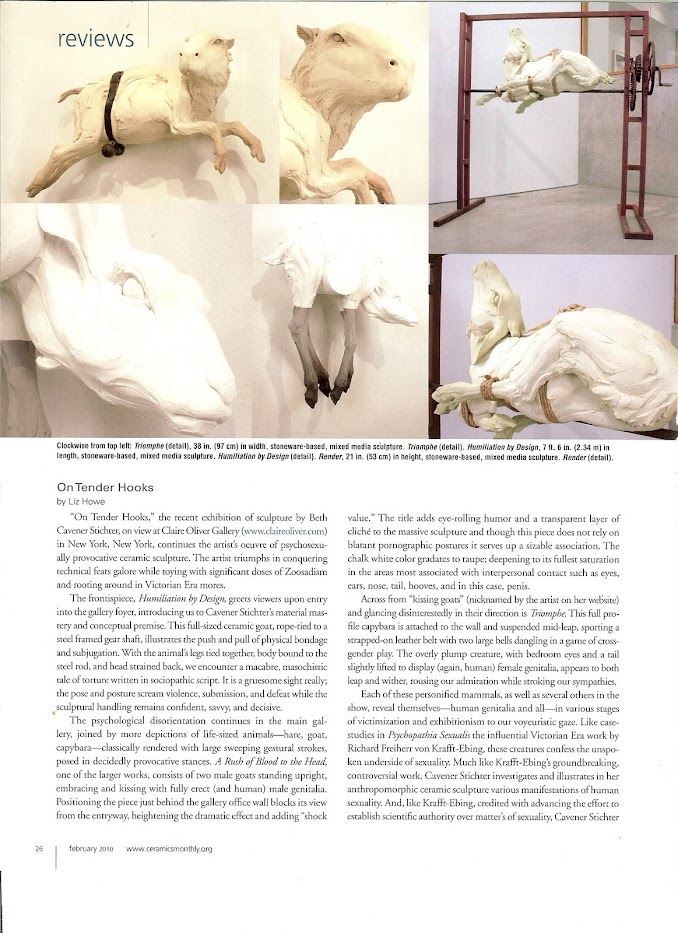Bernini
I had a dentist awhile back who did a fantastic job of decorating his office with very current, non-representational artwork. The office was in a non-descript old brick ‘professional’ building. You know the ones…in the city, no more than three stories high, glass pane front door with an automatic locking system and a large black directory board (with white pop in letters) just inside. It wasn’t a real classy place but functioned acceptably as my dentist’s office building and he was a good guy. Stepping from the pastel hallway into his waiting room caused an abnormal clash of expectation and reality. It was almost jarring. The decorator had spared the medical illustrations of open mouthed gingivitis gums, Highlights magazines and small brightly colored plastic children’s furniture. Instead the room was smartly painted, furnished with design-school tables and chairs. The walls were sparsely filled, with room to view each carefully selected work of art. Several nice contemporary pieces hung on the wall – originals from a local artist – exploring abstract, geometric themes of color, shape and pattern. And, when I made my way to the exam room I saw in each room an art print or two representing one of the fathers of abstraction. It was fantastic! This guy loved art! We talked about his selections and he wished only that he could surround himself, and his patients with the originals!
And, what does this have to do with Bernini?!
Well, as is customary in the patient/dentist relationship I returned to his office close to six months later (maybe eight). For a lack of anything much else to talk with him about I commented on one or another of the prints expecting his usual enthusiastic response. This time I was met with an incredibly different reaction. My art-loving dentist explained that he couldn’t wait to change some things around the office after having a significant change of heart about art. What happened?
Shortly after my previous visit he had traveled to Italy Italy
So as I focus in my own studio this week on the Bernini Portrait I remember my former dentist. Some day I should really get back there and peek in his office.
Speaking Likeness: Intimacy & Immediacy in Bernini’s Portraits
In the early 1630s Bernini, who had temporarily abandoned portraiture, was asked by his patrons Cardinal Scipione Borghese and Pope Urban VIII for portrait busts. The result was a less formal and more intimate portrait that marked a decisive change in Bernini’s approach to the art form. Friend to both men, Bernini allows us the privilege of seeing them through his eyes: as men of power and status, but also as real, complex beings. Taking cues from contemporary painting, Bernini chose to portray his sitters in action. Scipione seems to speak and we listen. Lost in thought, Urban turns his head to acknowledge us, and we sense his right arm shift under his cape, as he begins to motion to us. The fleeting moment is preserved forever in stone. Caught up in their action, we respond as if we are now part of the drama. Viewer and artwork engage one another.
Drawing on a figure of speech used by Bernini’s contemporaries, modern scholars have termed Bernini’s portraits from this period “speaking likenesses.” This refers first to busts such as the Scipione which show the sitter in speech. More broadly, the term refers to Bernini’s ability to make inert marble “speak,” conveying both the illusion of life and the psychological presence of his sitters.
In the early 1630s Bernini, who had temporarily abandoned portraiture, was asked by his patrons Cardinal Scipione Borghese and Pope Urban VIII for portrait busts. The result was a less formal and more intimate portrait that marked a decisive change in Bernini’s approach to the art form. Friend to both men, Bernini allows us the privilege of seeing them through his eyes: as men of power and status, but also as real, complex beings. Taking cues from contemporary painting, Bernini chose to portray his sitters in action. Scipione seems to speak and we listen. Lost in thought, Urban turns his head to acknowledge us, and we sense his right arm shift under his cape, as he begins to motion to us. The fleeting moment is preserved forever in stone. Caught up in their action, we respond as if we are now part of the drama. Viewer and artwork engage one another.
Drawing on a figure of speech used by Bernini’s contemporaries, modern scholars have termed Bernini’s portraits from this period “speaking likenesses.” This refers first to busts such as the Scipione which show the sitter in speech. More broadly, the term refers to Bernini’s ability to make inert marble “speak,” conveying both the illusion of life and the psychological presence of his sitters.





Comments